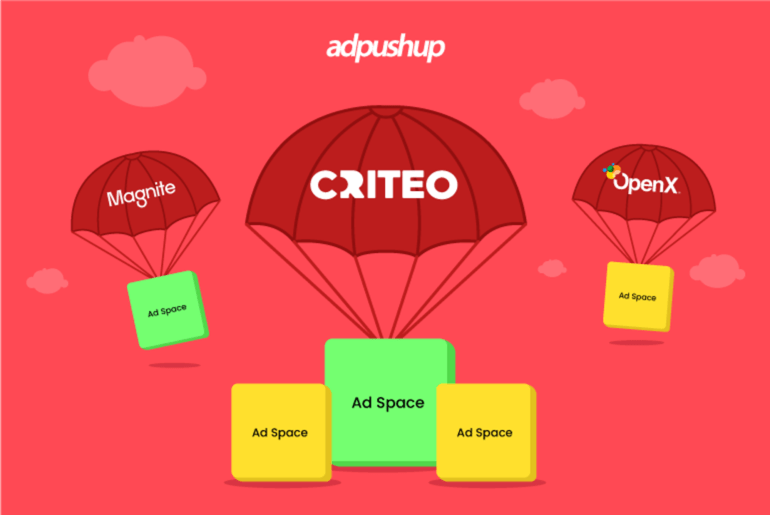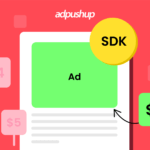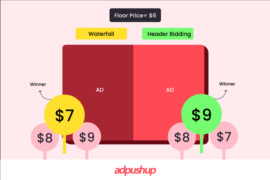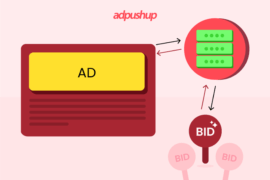Explore the top header bidding partners for publishers in 2024. Maximize your revenue with expert recommendations and leading ad tech solutions.
The introduction of header bidding has undeniably revolutionized the way publishers sell their ad inventory. However, as the ad tech industry evolves, it’s crucial for publishers to stay updated with the latest header bidding trends and demand patterns to maximize their revenue and efficiency.
With the widespread adoption of header bidding, more companies are recognizing its potential and developing solutions to help publishers not only increase their revenue but also deliver better ads.
Som without further ado, let’s delve into the heart of the matter. But first, let’s clarify who the header bidding partners are.
Who are Header Bidding Partners?
A header bidding partner is a demand source that publishers integrate into their header bidding wrapper to receive bid requests when users visit their website or app.
By partnering with these demand partners, publishers can increase their ad revenue at the same time deliver better results for the advertisers.
Now that we are on the same page about header bidding partners, let’s now delve into the list of the top 15 header bidding partners.
Why Do You Need a Header Bidding Provider?
Before you start looking for the best header bidding provider, it’s essential to learn why you need one. That said, let’s take a look at the reasons why there’s a need to connect with a header bidding provider:
You Need Expertise
First of all, setting up header bidding and optimizing it well requires comprehensive technical knowledge. And, without having any ad-tech expertise, you won’t be able to manage the complexities of the process.
Hence, collaborating with a header bidding partner means there’s no need to deal with the process as their professional team will be providing all the support you need and handle all complex tasks.
It’s Not a Set-and-Leave Technology
Header bidding optimization is an ongoing process that necessitates regular adjustments to maintain peak performance. To generate revenue and scale it, you’ll have to constantly optimize the auctions with the right tools and technology.
A header bidding partner not only helps in optimization but also connects you with better demand partners.
You Need Security
A header bidding partner ensures the safety and security of your ad inventory and protects it from ad fraud. Moreover, they will help maintain brand safety and provide you with useful insights and analytics that can later be used for optimization.
Open-Source Platforms vs. Header Bidding Partners
Open-source platforms and header bidding partners are two general categories of header bidding solutions. Here, let’s compare the two to help you decide which would be the best for ad optimization.
Open-source header bidding platforms are free to use, but they require publishers to work on configuration, integration, maintenance, troubleshooting, and more. You’ll have to insert and maintain the header bidding wrappers yourself and create accounts with demand sources. All-in-all, open-source header bidding platforms can be a viable choice for large enterprises so that they can set up an in-house team for all ad operations and further optimizations.
On the other side, header bidding partners provide you with a header bidding wrapper and connect you with demand sources. Working with a header bidding partner means they’ll be taking care of all the complex activities required for the process, so you don’t have to worry about anything.
List of Top 15 Header Bidding Partners
1. Criteo: Straight to Business

- Minimum monthly impressions: 50M
- Bid rate: 55.9 (desktop); 32.4 (mobile)
- Win rate: 19.9 (desktop); 15.2 (mobile)
- Timeout rate: 20.9 (desktop); 16.4 (mobile)
Criteo doesn’t have a custom wrapper, but it’s the most popular header bidder among Alexa 1000 sites, according to this study by GetIntent). That’s because of Direct Bidder, which is how Criteo stays ahead of Amazon.
Direct Bidder works without second price auctions – meaning that the final bid you receive from Criteo really is the highest bid on its entire marketplace (and not the second highest bid + 1 cent returned by most exchanges). The solution is free to use for publishers.
Direct Bidder works with standard display ads and native units. Since Criteo is also an Acceptable Ad ad-compliant vendor, it will selectively put ad-blocked impressions up for direct bidding as well.
“We are not building our own wrapper. We are trying to drive as much demand as possible, and we don’t want to do anything that will limit our access to supply.”
– Marc Grabowski, EVP of global supply and business development, Criteo (source)
Publishers can begin using Direct Bidder by adding the code directly to the page, the ad server, or within the Index custom wrapper.
2. Google (EBDA): The ‘Alternative’
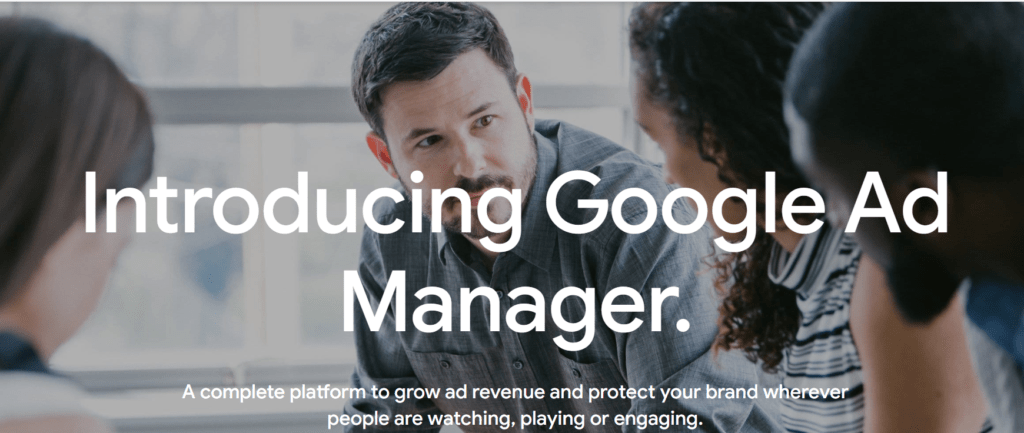
- Minimum monthly impressions: 90M
- Custom header bidding solution: DFP’s Exchange Bidding
Earlier this year, Google released an open beta of Exchange Bidding in Dynamic Allocation, aka EBDA, to all DFP publishers (except users of DFP Small Business).
Essentially, Google opened DFP’s dynamic allocation to other exchanges and created a unified auction within the ad server, in which AdX will now participate without any ‘unfair’ privileges.
For publishers, EBDA is a good workaround to traditional, client-side header bidding – ad calls are handled through servers which means less latency and better UX.
The problem lies with getting other exchanges to bid in this server-side auction. Despite the fact that Google easily owns what amounts to the largest pool of impressions on the internet, ad tech companies (esp. ones like AppNexus) are unwilling to enter the server-side ‘black box’ right in the heart of Google’s ad server.
As of now, Index, Rubicon, Cox, OpenX, and Sovrn are some publicly listed exchanges that have signed up to EBDA. Google is working on signing up more ‘yield partners’.
“Exchanges are building their businesses with improved inventory access, and new players are ramping up their buying or opening negotiations with us weekly.”
– Jonathan Bellack, Director of product management, Google (source)
EBDA works with DFP Publisher Tags and mobile app impressions.
3. Facebook Audience Network: Mobile Demand for Everyone
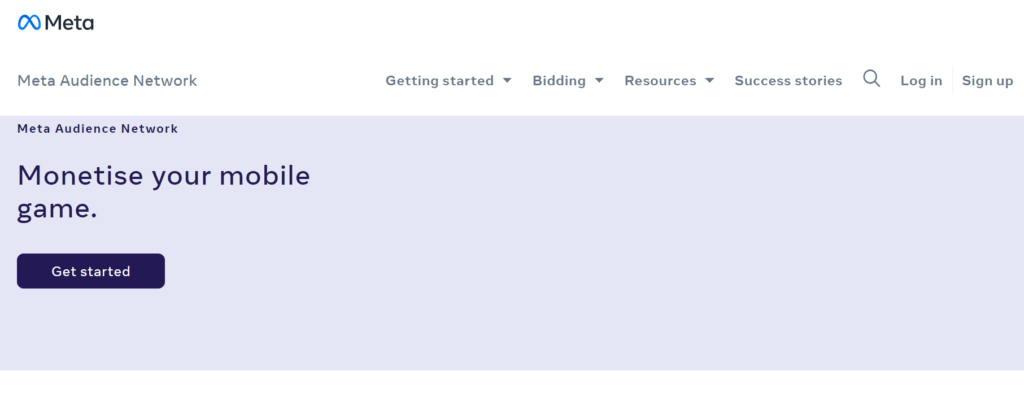
- Supports Prebid.js and Prebid Server
- Minimum monthly impressions: N/A
- Bid rate: 20.1 (desktop); 63.3 (mobile)
- Win rate: 80.5 (desktop); 86.4 (mobile)
- Timeout rate: 5.9 (desktop); 4.1 (mobile)
Facebook doesn’t have a standalone header bidding product, but its Audience Network made waves earlier this year by throwing its weight behind header bidding.
Facebook Audience Network (FAN) has a Prebid adapter for client-side and server-side bidding. It also integrates with custom wrappers by following approved partners—Amazon, Appnexus, Index Exchange, Media.net, Sonobi, and Sortable.
As a bidder partner, FAN brings in demand for mobile web and in-app impressions.
“App demand is an area where Facebook has been quite strong due to their user graph. With the inefficiencies of today’s dated app mediation offerings, this makes the real-time demand of having Facebook compete with exchanges even more attractive to publishers.”
– Drew Bradstock, SVP of product, Index Exchange (source)
Roxot’s bidder performance analysis data pegs FAN to be the most efficient header bidding demand partner for prebid.js users. As the report says, “it bids rarely but gets the job done when it matches a user” as evidenced by the >80% win rate and low timeout rates (==less latency). A must for mobile sites.
Also Read – A Simpler Guide to The Header Bidding Technology | Adpushup
4. Amazon: The Elite Club
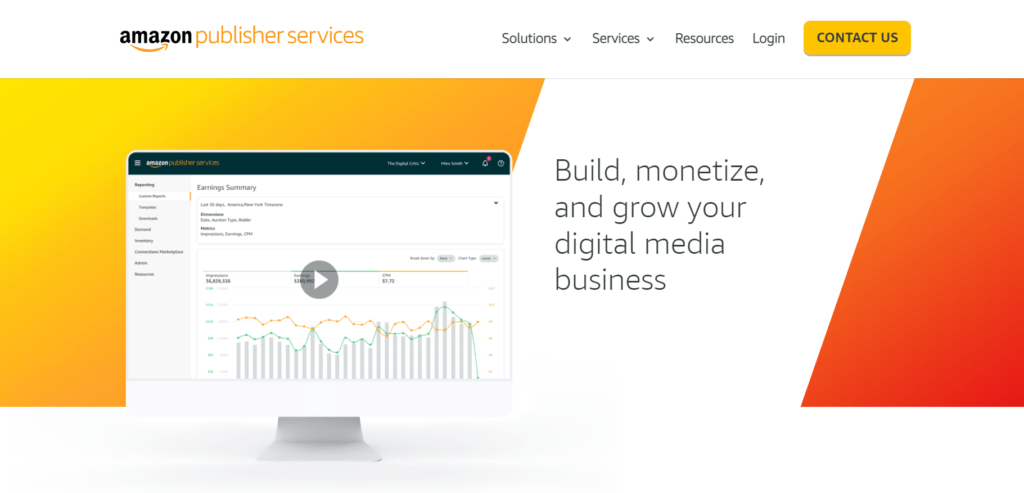
- Minimum monthly impressions: N/A
- Custom header bidding solution: Transparent Ad Marketplace (TAM)
Amazon’s cloud-based header bidding solution offers what Google EBDA doesn’t – fixed rate fee and data transparency.
Publishers and competing exchanges get to see the bid details, which is rare enough on its own in cloud integrations. The exchanges can also pay publishers directly (without processing said payment through Amazon). Then there’s the matter of a fixed rate fee in place of revenue share – a first for any ad exchange.
One source who viewed the (publisher) contract said the server-side tool will charge about a penny or half-penny CPM, less than many publishers’ ad-serving fees. (via AdExchanger)
Amazon is well-connected on the demand front, with integrations with major exchanges, all six of the top global ad agencies, and the option to add your own demand sources (not just ad exchanges) as you go along. The inventory Amazon is bidding on is extensive too.
“We continue to see growth in new channels. Video has been growing, and there’s more focus on native formats. We see those as areas of opportunity to increase our supply footprint.”
– Saurabh Sharma, Director of Ad Platform, Amazon (source)
Amazon TAM demand is only available via its own cloud-based header and currently integrates with no other open-sourced or custom header bidding containers.
Also see this video to know why transparent reporting and analytics should be considered while choosing a header bidding wrapper:
5. Xandr – Formerly Known as AppNexus
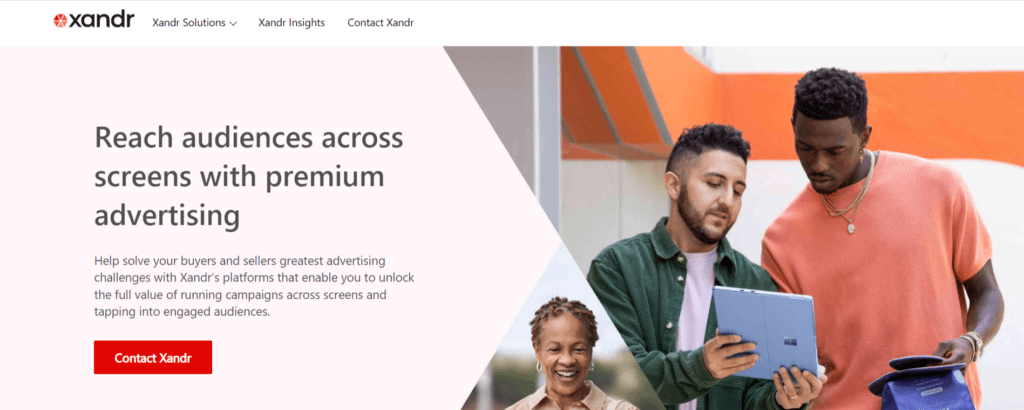
- Supports Prebid.js and Prebid Server
- Minimum monthly impressions: 30M
- Bid rate: 60.8 (desktop); 47.8 (mobile)
- Win rate: 37.8 (desktop); 51.9 (mobile)
- Timeout rate: 14.7 (desktop); 8.9 (mobile)
We cannot talk about header bidding without mentioning Xandr. The Prebid Pioneer is everything you need to rebel against a “shady and overbearing” Google.
Early in May 2017, AppNexus released Prebid Server – a free server-side header bidding solution that complements the client-side Prebid wrapper. Currently, the unified auction retrieves bids from AppNexus marketplace, Facebook Audience Network, Index Exchange, and other undisclosed premium partners.
AppNexus is willing to incur the cost of hosting and maintaining server-to-server integrations to “make sure that everyone can take advantage of server-to-server without relying on any black box technology”.
Prebid Server is also open-sourced and transparent, as all bids are received by Prebid.js (client-side version) and visible to publishers. The real challenge is getting approved for a Prebid server connection by AppNexus.
AppNexus does fairly well as a demand partner too, but bids only within prebid or a few custom wrappers (like AOL and Index). Roxot’s analysis puts AppNexus squarely among the top 4 header bidding demand partners in terms of efficiency and timeout rates. Gets a lot of incredibly unique demand from WPP.
Also Read – Header Bidding Optimization – A Step-by-Step Guide
6. Index Exchange: The Neutral Party
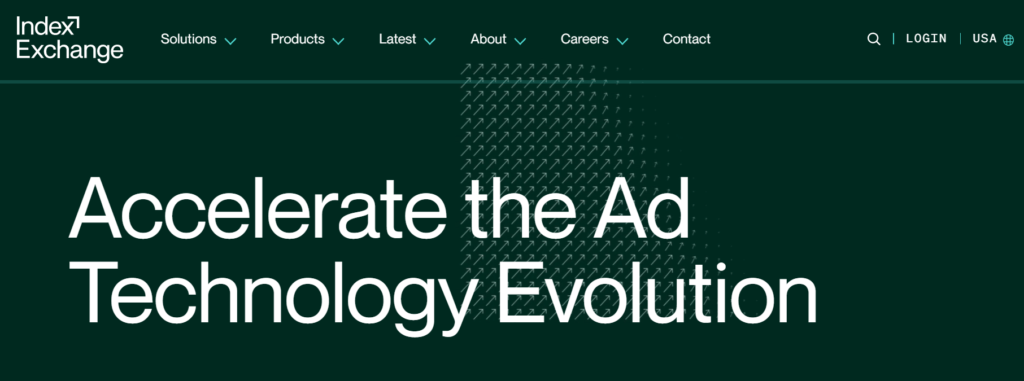
- Supports Prebid.js and Prebid Server
- Yield Partner on Google EBDA
- Minimum monthly impressions: N/A
- Custom header bidding solution: Known simply as “Header Tag Wrapper”
- Bid rate: 68 (desktop); 38 (mobile)
- Win rate: 41.8 (desktop); 51.4 (mobile)
- Timeout rate: 11.9 (desktop); 6.1 (mobile)
Index Exchange takes no part in the tug of war (Google vs. everybody else) in the ad tech ecosystem. It just wants supply for its top-notch demand, and it’s not pulling any stops to get it.
Index Exchange has server-side integration with AppNexus. It also bids through DoubleClick EBDA. In December 2016, Index went ahead with video header bidding (a custom video player with built-in header wrapper logic). It also has its own custom client-side wrapper, which integrates Criteo and Facebook along with other ‘picky’ ad exchanges.
As a header bidding demand partner, Index bids especially well for video impressions in EMEA regions.
Roxot’s performance report puts Index among the top 4 most efficient bidders (win rate * bid rate) and latency (timeout rates).
7. PubMatic
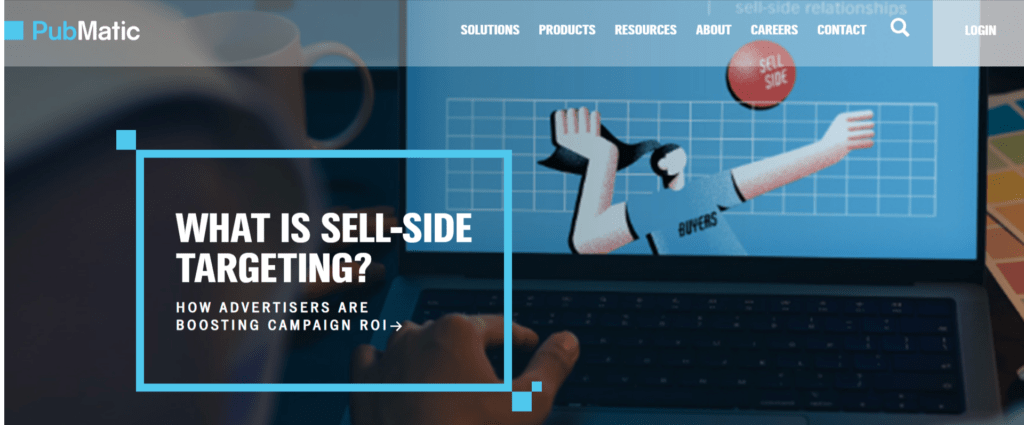
- Supports Prebid.js and Prebid Server
- Yield Partner on Google EBDA
- Minimum monthly impressions: N/A
- Custom header bidding solution: Known simply as “PubMatic Open Wrapr”
If you are looking for an enterprise header bidding wrapper, PubMatic is for you. The company has built the header bidding wrapper on top of the prebid.js and it is certainly attractive to many. Its clients include Verizon Media Group, News Corp, Electronic Arts, and more. Their wrapper comes with plenty of benefits such as A/B testing, baked-in identity management, in-depth analytics, and the list goes on.
8. Magnite (Formerly Known as Rubicon Project)
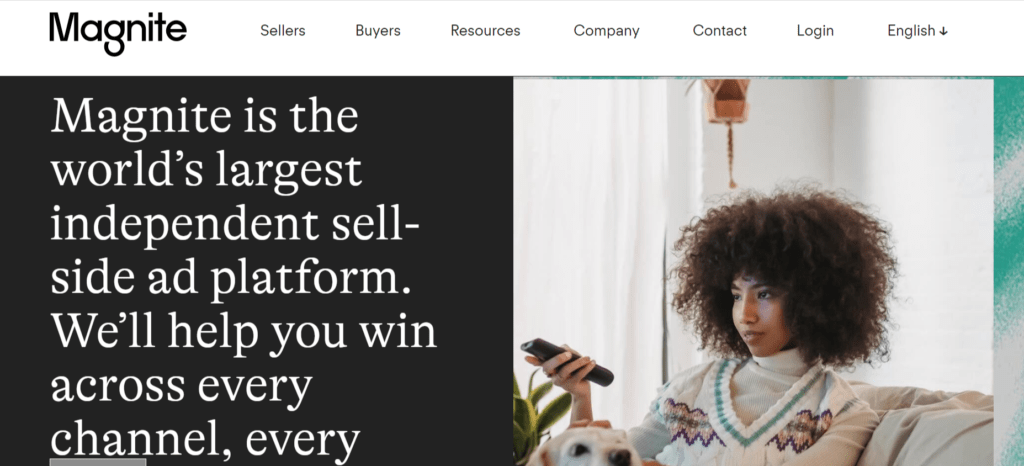
- Supports Prebid.js
- Yield Partner on Google EBDA
- Minimum monthly impressions: 10M
- Custom header bidding solution: FastLane
- Bid rate: 68.4 (desktop); 21.6 (mobile)
- Win rate: 38.3 (desktop); 30.4 (mobile)
- Timeout rate: 5.8 (desktop); 8.2 (mobile)
Magnite took a lot of flack for ignoring header bidding while it was still gaining steam. Consequently, stock prices plummeted, revenue was lost, and employees were laid off.
Now the exchange has extensive plans for header bidding.
Rubicon has a prebid adapter, but publishers need Rubicon’s explicit permission before adding the exchange to a prebid wrapper. Their custom wrapper, FastLane works for display (desktop and mobile), native, and out-stream video impressions, mobile in-app inventory (via a 40kb SDK), and Google AMP sites (via a special adapter).
Rubicon is also making overtures on the buy side of header bidding. The company recently acquired nToggle in an attempt to reduce the strain on DSPs caused by processing redundant bid requests (a header bidding side-effect).
Within prebid.js, Rubicon is an active bidder, managing to lose fewer bids than Facebook Audience Network to latency. Add it to raise bid density without the cost of latency.
Also Read – What are Header Bidding Wrappers? How Do They Work
9. OpenX
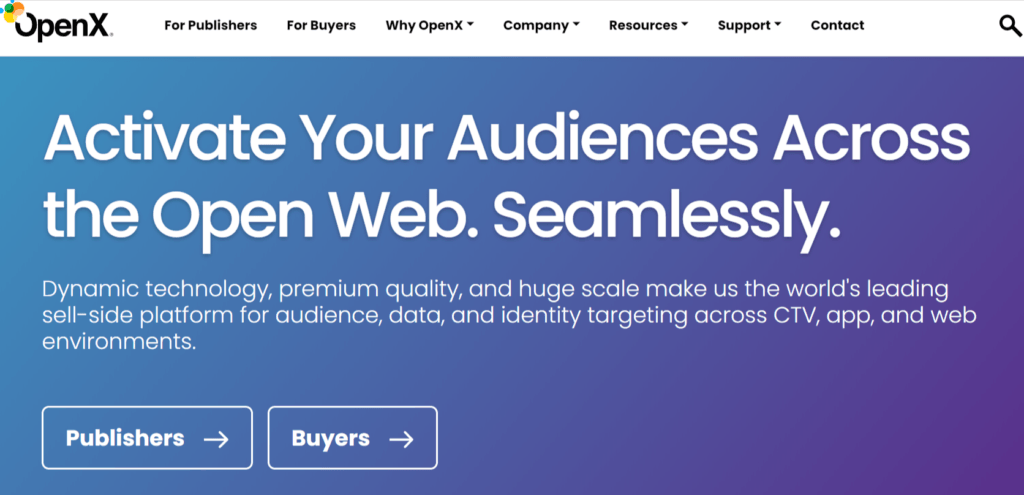
- Supports Prebid.js
- Minimum monthly impressions: 100M
- Custom header bidding solution: OpenX Bidder
- Bid rate: 36.3 (desktop); 28.5 (mobile)
- Win rate: 25.6 (desktop); 23.7 (mobile)
- Timeout rate: 7.3 (desktop); 9.4 (mobile)
OpenX was among the first vendors to provide header bidding to its publishers. They even put a toe in server-to-server header bidding with OpenX Meta – which fizzled out due to widespread skepticism from the rest of the industry.
Currently, OpenX has an adapter for Prebid and its own custom wrapper (OpenX Bidder) for all impression types.
Other than Google, OpenX is the only exchange on this list with an independently validated certification against fraud and malware from Trustworthy Accountability Group (TAG).
OpenX is a decent enough bidder, as per the performance data. The low timeout rate (bids lost because of timeout) makes it a good bidder to have around, despite the low bid and win rates.
10. Basis Technologies Formerly Known as Centro Brand Exchange
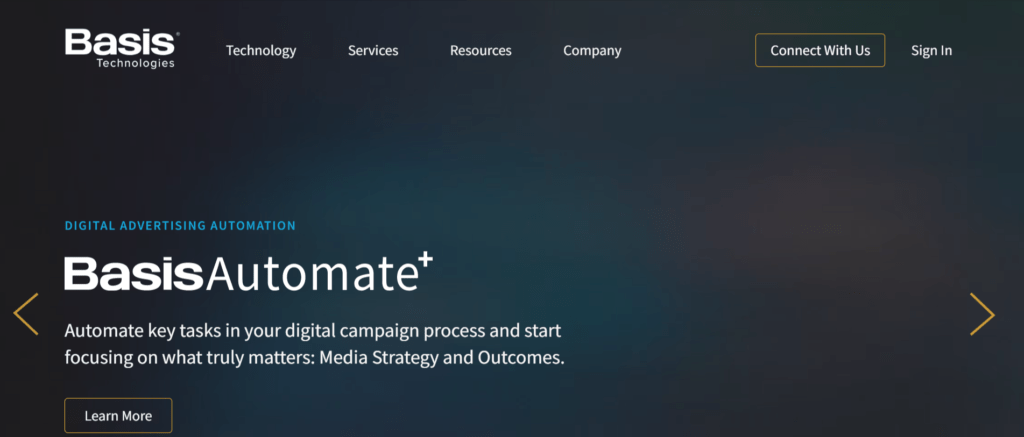
- Supports Prebid.js
- Minimum monthly impressions: N/A
Centro, like Facebook, has no custom wrapper solutions of its own. It has a Prebid adapter and is integrated as a demand partner with a few custom wrappers, a number they plan to increase.
[We have plans to integrate with the header bidding solutions that our publisher partners value and choose to use. We are currently focusing on partnering with both Amazon and Index’s server solutions.}
– Chris Bailey, Director of brand exchange operations, Centro
It has demand for all types of impressions. The exchange, however, is extremely cautious with publisher relations and takes brand safety seriously, choosing to purchase inventory directly (and almost exclusively) from national and local journalistic publications.
11. TripleLift
- Supports Prebid.js and Prebid Server
- Minimum monthly impressions: 100 million
- Provides custom header bidding solution
TripleLift has earned a reputation as one of the best header bidding partners. It provides publishers with a broad network of publishers and buyers. With its primary focus on native advertising, TripleLift engages in programmatic advertising, covering a diverse range of channels and ad formats.
Moreover, TripleLift gets support from several publishers as it takes care of ad fraud well and manages to work with 100% of the AdAge 100.
12. Sharethrough
- Supports Prebid.js and Prebid Server
- Minimum monthly impressions: The Sharethrough Exchange (STX) powers over 40 billion monthly impressions.
- Provides custom header bidding solution
Sharethrough is another reliable demand partner providing effective header bidding solutions. It allows publishers to reap ad revenue from various channels of communication. In addition, Sharethrough focuses on real-time bidding, which proves to be highly beneficial for users and advertisers and eventually increases the inventory value.
Moreover, Sharethrough comes with pre-built templates to optimize ad formats and dynamic video captions to increase video ad engagement.
13. SmartyAds
- Supports Prebid.js and Prebid Server
- Minimum monthly impressions: N/A
- Provides custom header bidding solution
SmartyAds is among the best header bidding companies, providing self-serving solutions to publishers so that they can easily connect with SSPs and DSPs. Its wrapper solution uses the same type of metrics to measure all bidders, which enables the publisher’s ad server to make a quick decision.
Moreover, SmartyAds is known for its effectiveness in maintaining transparency and control throughout the process.
14. Teads
- Supports Prebid.js and Prebid Server
- Minimum monthly impressions: 1 million page views per month
- Provides custom header bidding solution
Teads stands out among other choices whenever publishers need video monetization solutions. They provide the best video monetization solutions along with interactive ad creatives. Publishers can surely depend upon Teads when it comes to maintaining the ad inventory as they use artificial intelligence and data to improve revenue.
15. 33Across
- Supports Prebid.js and Prebid Server
- Minimum monthly impressions: N/A
- Provides custom header bidding solution
33Across is one of the renowned header bidding partners because of the high ad viewability it offers. Their innovative Impact Ad Formats are the reason they can generate that much viewability. Moreover, their platform offers a streamlined and easy-to-manage option for header bidding solutions.
How Many Header Bidding Partners Are Too Many for Publishers?
Many publishers believe that adding up to 10 header bidding partners is enough.
However, the ideal number of header bidding partners on a website depends on multiple factors.
These factors include traffic volume, provider expertise, and the impact of optimization on page latency and revenue. This is because every website is different in size and experiences different percentages of revenue gains.
Note that, the number of header bidding partners required can be calculated by tracking the impact on revenue after a few partners have worked on it. Here, the A/B Testing framework proves to be highly efficient, as it independently tests the effect of each partner on the overall revenue generated.
6 Essential Factors to Consider When Looking For a Header Bidding Provider
Apparently, not all header bidding providers are the same, so to choose the best option for yourself, you must look for these factors:
1. Pricing and Payment Structure
First of all, you need to consider the payment structure offered by the provider. Different header bidding companies have different payment structures. Most of them operate on a revenue sharing model, and some charge separately for ad serving and other ad delivery-related services. So, discuss all payment-related parameters beforehand and be cautious of hidden charges.
2. Demand Partners and Prebid Wrapper
Demand partners are of various types, so you need to ensure that the one you’re considering is of premium grade. Some useful factors here would be the bid rate, win rate, and timeout rate.
The same goes for SSPs (Supply Side Platforms), but you need to take care of different factors. In addition, you need to ensure that the header bidding wrapper can manage demand partners without affecting website performance.
3. Technical Support and Services
Header bidding technology is no doubt pretty complex, and a publisher must seek out the best possible technical support and services for the whole process. So, when looking for reliable header bidding partners, it is essential to figure out what kind of support you get. You need to check if training is offered for self-service products and the extent of support for managed services.
4. Ad Inventory Protection and Brand Safety
Ad fraud is common and affects several companies operating in the digital advertising industry. While selecting the right header bidding provider, make sure you discuss the security measures the professionals will take to avoid ad fraud. Moreover, make sure they know all the required tactics to run ads that follow your brand standards and take care of brand safety.
5. Reporting and Analytics
Make sure that the header bidding provider you’re about to consider is providing comprehensive reporting and analytics tools. As a publisher, you must know how your ads are performing and with the help of reports and analytics, you get all the required information you need.
6. User-friendly Product and Workflow
If possible, assess the ease of use of the provider’s interfaces and dashboards. This will help determine the level of support you’ll get for ad optimization and management. Moreover, check if the product is tailored to publishers of your size and ask the professionals about their strategy for integration and ongoing support.
AdPushup’s Header Bidding Solution
Merely deploying header bidding in your ad stack isn’t enough. Consistently optimizing it with technical improvements is the need of the hour. This is what AdPushup’s header bidding solution does. Through our multiple optimization features using data science and machine learning, we help publishers maximize their yield.
With our header bidding solution, you get:
- Automatic demand partner selection according to optimum requirements
- Smart timeout management
- Freedom to bring your own demand
- Bid monitoring and discrepancy resolution
To get started, click here.
Frequently Asked Questions – Header Bidding Partners
Header bidding demand partners are networks to whom header bidding wrapper sends bid requests for ad inventory, and they bid in real-time auctions to fill the ad slots.
There are four main types of header bidding: traditional header bidding, server-side header bidding, header bidding with wrapper tags, and client-side header bidding.
A header bidding wrapper is a piece of javascript code that manages the header bidding process by sending bid requests to multiple demand partners and returning the highest bid to the website or app.
A header bidding platform is a technology that enables publishers to simultaneously offer their ad inventory to multiple demand partners, increasing competition and revenue
Header bidding works as a system that collects programmatic bids on the publisher’s page and then sends the ad request to the Ad Manager.
Header bidding is free only when you’re using an open-source solution for it; for example, Prebid.

Deepak has a keen eye for detail and a deep understanding of the ad tech landscape. Whether it’s through in-depth articles, thought-provoking insights, or compelling storytelling, he’s dedicated to helping people navigate the complex world of ad tech with the simplicity of his words.
